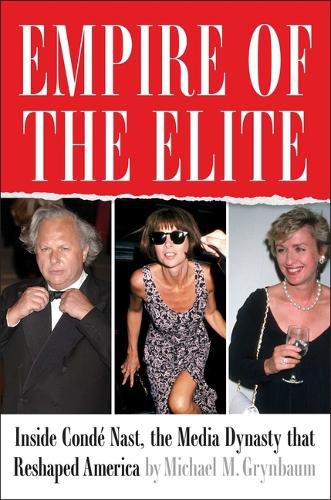Readings Newsletter
Become a Readings Member to make your shopping experience even easier.
Sign in or sign up for free!
You’re not far away from qualifying for FREE standard shipping within Australia
You’ve qualified for FREE standard shipping within Australia
The cart is loading…






From a New York Times media correspondent, a dishy history of the Conde Nast magazine empire, home of Vogue, Vanity Fair, The New Yorker, and more, focusing on its glitzy heyday from the 1980s through the 2000s. For decades, Conde Nast and its glittering magazines defined how to live the good life in America. The brilliant, complicated, striving characters behind Vogue, Vanity Fair, The New Yorker, GQ, Architectural Digest, and many other titles manufactured a vision of luxury and sophistication that shaped consumer habits, cultural trends, intellectual attitudes, and political beliefs the world over. Conde's billionaire owner Si Newhouse and his stable of star editors, photographers, and writers were the gatekeepers who decided what and who mattered, and they offered those opinions to tens of millions of readers every month. They were the ultimate influencers--before social media changed everything. The magazines crowned celebrities by the dozens, patronized creative talent much as the Medicis had underwritten Renaissance artists, and supercharged opulent events like the Vanity Fair Oscar Party and the Met Gala, which came to rival any fete that Louis XIV ever hosted at Versailles. The book is full of fresh behind-the-scenes reporting about a plethora of boldface names and sets out to explain how Conde Nast established itself as a de facto American aristocracy, anointing an elite and dictating the culture they presided over.
The colorful story of Conde Nast at its zenith and the profound way it influenced how Americans aspired to look, eat, decorate, date, marry, and even think, has never been examined deeply. Empire of the Elite is the first book-length history of an empire whose publications refashioned American notions of prestige, whose editors became celebrities themselves, and whose diminution offers a cautionary tale of class, hubris, and technological change, even as its aesthetic and ethos remain influential to this day.
$9.00 standard shipping within Australia
FREE standard shipping within Australia for orders over $100.00
Express & International shipping calculated at checkout
From a New York Times media correspondent, a dishy history of the Conde Nast magazine empire, home of Vogue, Vanity Fair, The New Yorker, and more, focusing on its glitzy heyday from the 1980s through the 2000s. For decades, Conde Nast and its glittering magazines defined how to live the good life in America. The brilliant, complicated, striving characters behind Vogue, Vanity Fair, The New Yorker, GQ, Architectural Digest, and many other titles manufactured a vision of luxury and sophistication that shaped consumer habits, cultural trends, intellectual attitudes, and political beliefs the world over. Conde's billionaire owner Si Newhouse and his stable of star editors, photographers, and writers were the gatekeepers who decided what and who mattered, and they offered those opinions to tens of millions of readers every month. They were the ultimate influencers--before social media changed everything. The magazines crowned celebrities by the dozens, patronized creative talent much as the Medicis had underwritten Renaissance artists, and supercharged opulent events like the Vanity Fair Oscar Party and the Met Gala, which came to rival any fete that Louis XIV ever hosted at Versailles. The book is full of fresh behind-the-scenes reporting about a plethora of boldface names and sets out to explain how Conde Nast established itself as a de facto American aristocracy, anointing an elite and dictating the culture they presided over.
The colorful story of Conde Nast at its zenith and the profound way it influenced how Americans aspired to look, eat, decorate, date, marry, and even think, has never been examined deeply. Empire of the Elite is the first book-length history of an empire whose publications refashioned American notions of prestige, whose editors became celebrities themselves, and whose diminution offers a cautionary tale of class, hubris, and technological change, even as its aesthetic and ethos remain influential to this day.